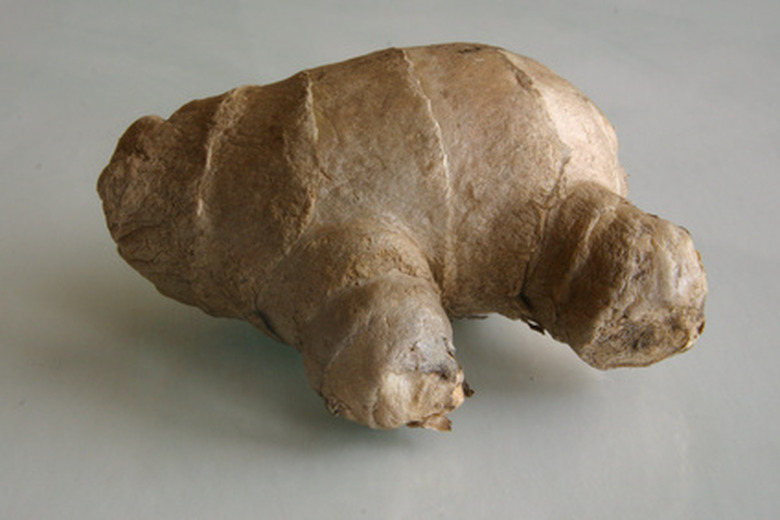How To Plant Ginger That Has Already Sprouted
Fresh ginger root is lovely, but most home cooks will probably not use the entire root before it either spoils or starts to sprout. If it starts to sprout, and you like to garden, you are in luck. It is easy to plant a ginger root that has already sprouted, no matter what climate zone you live in. What's more, after the first year, you can harvest small bits of ginger root for culinary uses as needed–without killing your plant!
Step 1
Fill your pot with a mixture of 1/3 sand and 2/3 potting soil. This will help to ensure good drainage for your ginger.
Step 2
Dig a shallow hole for your ginger root in the soil. You will be placing it horizontally, so dig a hole slightly larger than the shape of the root if laid on its side.
- Fresh ginger root is lovely, but most home cooks will probably not use the entire root before it either spoils or starts to sprout.
- It is easy to plant a ginger root that has already sprouted, no matter what climate zone you live in.
Step 3
Place the ginger root in the hole, sprouts facing upward
Step 4
Cover the ginger root with the soil mixture and water.
Step 5
Place near a window with filtered sunlight, perhaps one with blinds or a curtain. Ginger likes shady, warm areas.
Step 6
Put the pot of ginger outside when the outdoor temperature is consistently above 50 degrees Fahrenheit. Make sure to keep it in a shady place and to water it frequently.
Step 7
Apply an all-purpose fertilizer a couple of times a year. Spring and fall are good times to apply. Always follow the manufacturer's instructions for application so that you do not burn your ginger plant.
- Place the ginger root in the hole, sprouts facing upward Cover the ginger root with the soil mixture and water.
- Make sure to keep it in a shady place and to water it frequently.
Tip
Ginger roots always stay close to the surface of the soil. You will occasionally see ginger roots poking up above the surface of the soil. This is normal. In fact, after the plant has been allowed to establish itself for a year, you can harvest small nubs from these exposed roots as needed. Ginger will not survive frost. Bring your potted ginger indoors before the first frost. Places such as attached garages or basements or anywhere that does not feature freezing temperatures or direct sunlight will work well. Ginger flowers are small and yellow, and the foliage is small and cute and bushy. When your ginger plant is fairly small and manageable, you may enjoy displaying it in your kitchen. As it gets larger, you will need to repot it so that it stays healthy. To do so, prepare a larger pot with the same sand and soil mixture you used previously. If the smaller pot is flexible, squeeze the sides to loosen the root ball. If it is not flexible, use your hand trowel to lightly go around the outside of the root ball and loosen it. Plant it as you did the first time, only in the larger pot.
Things Needed
- Sprouted ginger root
- Potting soil
- Sand
- Medium-sized pot
- Hand trowel
- Fertilizer
